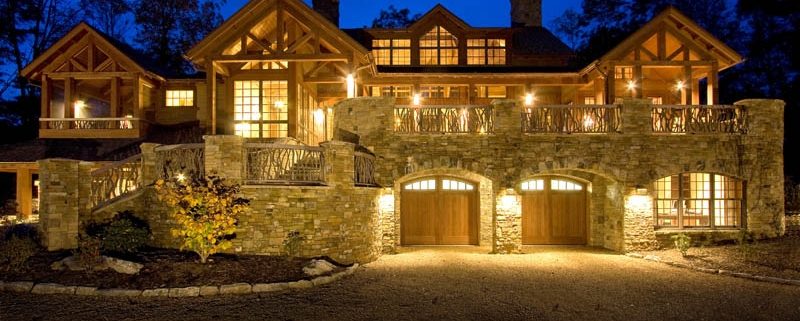
Here are the 15 most asked questions when it comes to buying a fractional share of a home or condominium, also known as a Private Residence Club. You can find even more answers in the article “The 10 Commandments of Buying a Fractional (Private Residence Club) Vacation Home.)
1. How Big is the Private Residence Club (PRC) Industry?
2. Where Are Fractional Vacation Homes Available?
3. What’s the Difference between a Private Residence Club and a Destination Club?
4. How Does a PRC Differ from a Timeshare?
5. Will There be a Resale Market for PRCs?
6. Will I Stay in the Same Dwelling Each Time at My PRC?
7. Can I Make Changes to My PRC Vacation Home?
8. Will Peak Periods Be Difficult to Reserve?
9. Can Family/Friends Use a PRC if the Owner Is Not There?
10. Can I Place My PRC Unit in a Rental Pool?
11. Will I be Hit with Any Hidden Costs?
12. What Might Homeowner Association Fees and Club Fees Add Up to?
13. What About Assessments?
14. Does PRC Ownership Involve Lots of Paperwork and Meetings?
15. Is Financing Available for PRC Share Purchases?
1. How Big is the Private Residence Club (PRC) Industry?
According to the research group Ragatz Associates, at least 158 properties worldwide now offer fractional interests. Total sales of fractional real estate properties in 2004 came to $625 million. In addition, the American Resort Development Association has published a survey calling high-end fractional ownership the fastest-growing segment in the resort real estate category.
2. Where Are Fractional Vacation Homes Available?
It is truly a North American industry, at least for now. About 76 percent of all fractional properties are located in the U.S. The remaining 24 percent are in Mexico and Canada. Ski destinations account for the biggest share of fractional properties, followed by beach and golf destinations, according to Ragatz data. Aspen, Colorado, might be considered the PRC capital—the B.J. Adams research group reports that nearly 20 percent of all home sales in Aspen were fractional shares.
3. What’s the Difference between a Private Residence Club differ and a Destination Club?
Destination clubs don’t offer equity and they emphasize choice and variety. A member of a destination club can select a Caribbean island for one vacation and a Canadian mountain lodge for his next vacation. The owner of a private residence club share is just that, an equity owner (with a recorded deed and title). He may enjoy certain exchange rights with sister PRCs, but his intention is to spend his vacation time at the club where he owns his share.
4. How Does a PRC Differ from a Timeshare?
The term most emphasized by people answering this question is “ownership density.” With fractional ownership, or PRC, property, you are one of about eight to 12 owners of a home. With timeshare, you are one of perhaps 52 owners. At the same time, your PRC residence is constructed, priced and marketed much more exclusively than a timeshare property.
5. Will There Be a Resale Market for PRCs?
The data gathered by Ragatz Associates showed resales at active fractional resorts surpassing $31 million in 2004, so the secondary market is definitely up and operating.
6. Will I Stay in the Same Dwelling Each Time at My PRC?
That depends on which PRC brand or PRC destination you buy into. Some are set up so that you spend your advance-booking weeks in the same home every time. When you make a booking for a space-available visit, you will no doubt be offered the use of which residences (in your class) are available for that time period.
7. Can I Make Changes to My PRC Vacation Home?
Generally speaking, no. Your purchase agreement will contain language that basically protects you and your fellow-owners from unexpected and unwanted changes to the appearance and layout of the residence. A typical PRC will provide a secure, separate lockup for each owner’s incidental décor elements, including mantel pieces, throw pillows, family photographs—so that with a bit of creativity the home can be satisfactorily personalized.
8. Will Peak Periods Be Difficult to Reserve?
Peak-demand periods, such as President’s Week and the week between Christmas and New Year’s, aren’t much different for PRCs than for any property or facility in the tourism market. Residence-club managers generally address challenge by setting up a rotation system. A 10-year rotation is fairly standard, which means that in 2007 a share owner may end up booked for most or all of his preferred weeks, with the understanding that one of the upcoming years may find himself booked into less desired calendar slots.
9. Can Family/Friends Use a PRC if the Owner Is Not There?
Some PRCs will require that you accompany any friend or extended-family members who want to use your property for a space-available visit. (This limits the pool of possible space-available users and therefore makes it more likely that a share owner’s space-available request can be honored—a sensitive issue with PRC developers). If you are willing to cede your long-range reservation times to friends and relatives, you can generally do so without accompanying them.
10. Can I Place My PRC Unit in a Rental Pool?
There is no rental program element in the higher end of the market. At the lesser price levels some developers offer rental programs, allowing members to deposit reservations for rental.
11. Will I be Hit with Any Hidden Costs?
It would be inaccurate to call any of the costs associated with fractional ownership “hidden,” but there are quite a few cost categories for you to keep track of. These include the price of the ownership share, annual maintenance fees, annual club dues, supplemental-occupancy (or “space available”) usage fees, the possibility of a capital assessment, taxes and incidentals.
12. What Might Homeowner Association Fees and Club Fees Add Up to?
At all PRCs, the HOA fee seems to be quite inclusive. All taxes, utilities, maintenance, staffing, supplies, etc., including the many concierge services like pre-arrival provisioning, tend to be covered by it. And to properly evaluate the HOA fee charged by a residence club you need to estimate what you would pay in taxes and upkeep on a freestanding vacation home of similar quality.
One example could be the very high-end golf property of Pronghorn in Bend, Oregon. A 1/12th fractional owner is paying about $160,000 for his one-month occupancy privilege in a deluxe 2-bedroom Pronghorn villa.
He then pays a Homeowner’s Association (HOA) fee of about $6,000 in respect of his 1/12th share. Pronghorn charges PRC customers such a sizable HOA fee (residents who fully own their 2BR home at Pronghorn don’t pay much more for, theoretically, 12 times the usage) as part of its overall pricing strategy, which keeps the cost of the fractional shares notably modest compared to competing products in the market.
The Pronghorn golf membership fee (the initiation fee) is included in the cost of the fractional share, and the golf club dues for a 1/12th owner are a mere $55, paid once a year at the time of occupancy. Club members pay no green fee at Pronghorn, nor do their spouses or their children under age 23, although golf cart and caddie services are charged per round.
13. What About Assessments?
If you are sensitive to the issue of a possible assessment for repairs or modifications (and who wouldn’t be?) be sure ask what portion of the yearly HOA fee is earmarked to build up the refurbishment fund. That fund, and not assessment collections, is the cash source the developer should be using to do the inevitable replacing of carpet, siding, decks, etc.
14. Does PRC Ownership Involve Lots of Paperwork and Meetings?
As a fractional share owner you will be called upon to ratify decisions made by a board of directors and overseers. Most of these will be routine, but some may require deliberation. The management skill of the property developer will go a long way toward determining how hassle-free your PRC experience will be.
15. Is Financing Available for PRC Share Purchases?
Yes, many reputable lenders are actively in the market.



